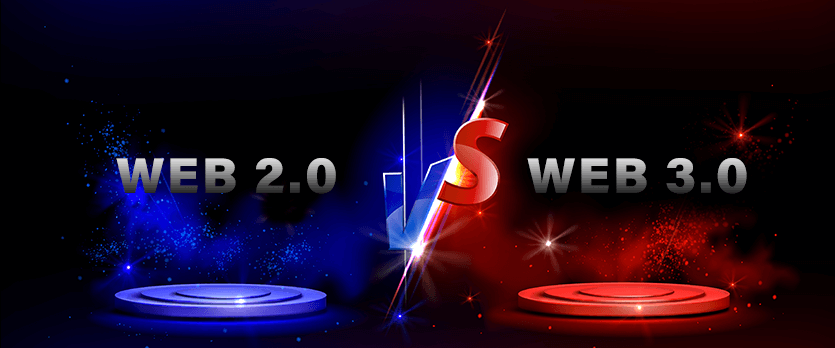Do you have a hard time understanding the difference between web 2.0 and web 3.0? I am going to list the important differences between web 2.0 and web 3.0, i.e. web 2.0 vs web 3.0, for your understanding.
The words “Web 2.0” and “Web 3.0” must be familiar to you if you are following blockchain closely. Defining these terms and their relevance to blockchain might be confusing to you. We have reached the stage of the internet we know today after many milestones. There is a difference in the way users interact with the internet between generations of internet services. To comprehend why they need Web 3.0, people want to know what the dissimilarities between web 2.0 and web 3.0 are. Here is a detailed explanation of the differences between web 2.0 and web 3.0. Knowing the differences between the two would serve as a good foundation for reflecting on the comparison between web 2.0 and web 3.0.
Web 2.0 vs Web 3.0: Overview Explained
What is Web 2.0?
Users were able to interact with content on the web through the second era of internet services. Apart from supporting user-generated content, Web 2.0 provided end users with greater interoperability and usability. Any technical specifications are not modified in the second-generation web. Contrary to popular belief, it focuses on reshaping the design and usage of web pages. The Web 2.0 revolution facilitated collaboration and interaction among users in P2P transactions, resulting in the development of e-commerce and social media platforms.
What is Web 3.0?
There are still a lot of downsides to web 2.0, despite its advanced appearance. Do you have any apprehensions regarding the safety of your confidential data? Because trusted intermediaries are needed in Web 2.0, trusted institutions control user data. A trusted intermediary is necessary if both sides have no idea or trust each other and like to complete a transaction. Data storage and management are under the control of the intermediary, which strengthens their grip on users. Decentralization has also proven to be effective in times of crisis, which calls for centralized power to be decentralized. It is interesting to note that the latter candidate when asked, “What is the difference between web 2.0 and web 3.0? It offers a viable solution to the disadvantages of web 2.0.
Difference Between Web 2.0 vs Web 3.0
| Point of Difference | Web 2.0 | Web 3.0 |
|---|---|---|
| Meaning | The 2nd era of internet | There is a strong focus on |
| services concentrated on communication. | decentralization & semantic learning in the 3rd era of the internet. | |
| Objective | Development of the community is the main objective. | The main objective lies in empowering individuals. |
| Technology utilization | ● HTML5 ● CSS3 ● AJAX ● JavaScript |
● AI ● ML ● Decentralized Protocols |
| App types | Web Apps | Smart apps |
| Feature-set | ● Enhanced communication ● Introduction to web apps. |
● Smart, web apps & capabilities.. ● The perfect amalgamation of web and knowledge representation. |
So, it’s quite clear that web 3.0 is more likely to win the race here. We heard you want to utilize web 3.0 technology in your business. Get in touch with the top web 3.0 development company.
Summing It Up!
A comparison of web 2.0 vs web 3.0 reveals that web 3.0 has better advantages. Humans and machines can interact with it through a promising infrastructure. Security, trust, and privacy are all improved with web 3.0. Decentralized protocols will be the foundation of web 3.0. By comparison, web 2.0 still serves as the foundation of most of today’s web apps. What applications are you using today that could be revolutionized by web 3.0? Contact us to know more!
Check out our listed profile here!.




